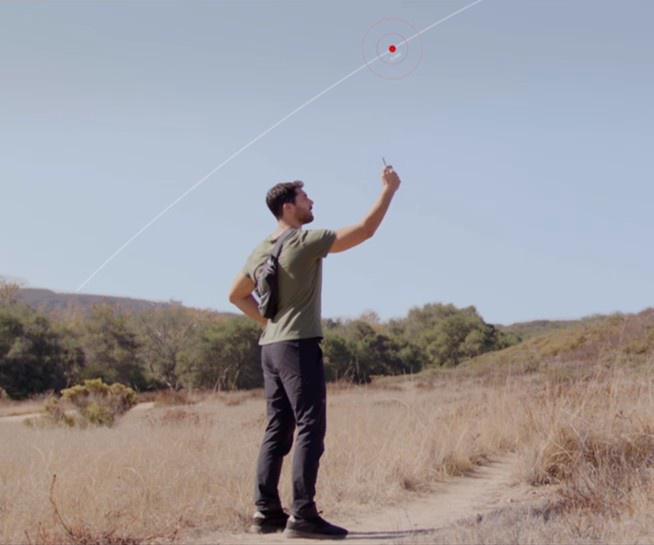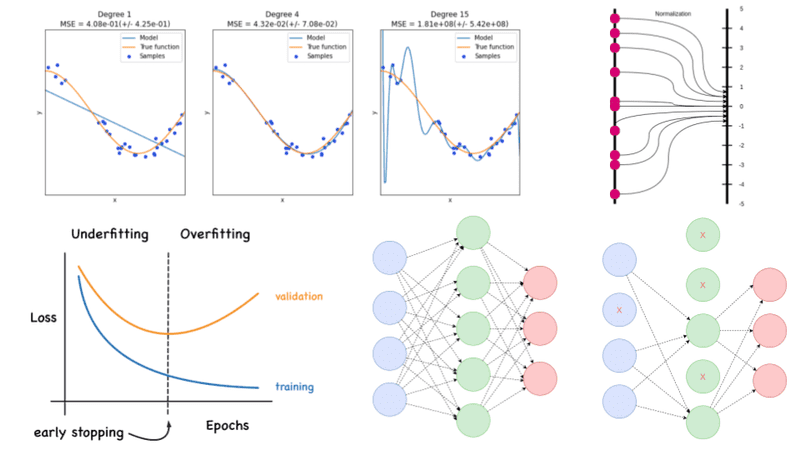
Qualcomm Snapdragon Satellite support non-terrestrial network (NTN) connections on smartphones and … [+]
The buzz in the wireless industry is all about space, or what is referred to as non-terrestrial networks (NTNs). The wireless 3GPP Release 17 specification includes two new standards for satellite communications from smartphones, mobile electronics, and IoT devices directly to satellites. While satellites have always been part of the wireless communications infrastructure, they have traditionally provided backhaul network communications, not direct communications to mobile devices other than clunky satellite phones and emergency equipment. Direct satellite communications with individual mobile devices will help overcome gaps in terrestrial cellular networks, providing a truly global infrastructure that can be leveraged by a variety of industries, and bridge the digital divide by bringing wireless communications to rural areas that often lack the infrastructure even with the rollout of 5G cellular networks.
An Understanding of NTN
The 3rd Generation Partnership Project or 3GPP is a global standards body consisting of a wide variety of wireless ecosystem members, such as intellectual property (IP) providers, semiconductor companies, networking companies, device OEMs, and wireless operators. Since 1998 and 2G cellular technology, members of the 3GPP have worked together to develop standards for new wireless technologies continuously. While the industry is now well past 3G and new generations of cellular technology are still introduced approximately every 10 years, new releases of the 3GPP standards are released approximately every two years within a generation in an on-going effort to increase the efficient use of a limited natural resource – radio spectrum. The standards also encourage the freeing up of additional spectrum, the development of new radio access networks (RANs), new encryption technology, higher network performance, aggregation of spectrum from different carriers and wireless technologies, support for additional use cases, and new network configurations. In other words, the 3GPP group is tasked with improving wireless technology with each generation and providing a global network that can be accessed from anywhere and by any device. With the inclusion of satellite networks, or non-terrestrial networks (NTNs), a global network will finally be possible.
The latest 3GPP standard that was finalized in 2023 is Release 17, the 3rd Release within the 5G cellular generation. Among other enhancements and additions, Release 17 includes two new standards for satellite networks, IoT-NTN and New Radio NTN or NR-NTN. The IoT-NTN standard defines narrow band using a 200KHz channel for two-way messaging and other low-bandwidth consumer and embedded/IoT applications, such as location tracking, asset tracking, and sensor monitoring. The data rates for IoT-NTN are similar to the data rates that were experienced in 2G. It will provide basic data connectivity.
The NR-NTN standard defines the use of 5G New Radio (NR) access technology for high-bandwidth communications using channels ranging from 5MHz to 20MHz. NR-NTN will be able to support tradition broadband communications such as video chats, gaming, and video streaming. MediaTek demonstrated the first video call using NR-NTN over a low-earth orbit (LEO) satellite network at MWC, but deployment of such a solution as a service is still likely several years away.
For the first generation of NTN support, satellite communications will essentially be an added service. However, Release 18, also known as 5G Advanced, will bring further enhancements to NTN communications, including aggregation with other frequency channels, as has been done with cellular technology between carrier channels and going forward with Wi-Fi. At that point, satellite communications will become another seamless but critical channel for global cellular communications.
NTN is just part of the Wireless Solution
Thus far, direct satellite communications have only been used with proprietary solutions, such as the Iridium satellite network, for several reasons. Satellites networks are expensive to build, launch, and maintain. In addition, more power is required to send a signal to space and back than between terrestrial towers. Even with the use of a LEO satellite constellation like Iridium and Starlink, the cost of the network and power requirements will always be higher than using a terrestrial network. So, why would anyone want to use satellites for mobile communications?
The main reason is that you just can’t receive a cellular signal everywhere. Even in areas where cellular coverage seems ubiquitous, there are always service gaps created by tall buildings, the sound walls of freeways, or the two-meter gap between cell tower coverage. These coverage lapses increase as you leave cities or dense urban environments because of the earth’s topology and fewer cell towers. It just isn’t as profitable to service areas with fewer users, especially when the topology prevents wide area coverage. Rural areas often lag behind cities in cellular coverage by years or even decades. No matter what AT&T, T-Mobile, or Verizon say, none of the US carriers has or is likely to ever have complete country coverage using traditional cell towers. Carriers obscure this fact by using clever marketing terms, such as “coast-to-coast” or “nationwide.” The same is true outside of the US.
The most pressing reason to use direct satellite communication is the potential to provide coverage where there are cellular coverage gaps, in remote areas, in rough terrain, and even in the middle of the ocean.
NTN Challenges
The new Motorola Defy smartphone and Defy Satellite Link with two-way messaging service provided by … [+]
Even with all these benefits, there are still challenges to bringing both global and regional satellite communications to the masses. The first is the need to implement the new standards in devices. A few solutions have been introduced to support IoT-NTN communications. The iPhone 14 supports what is being referred to as emergency or SoS communications with the use of the Globalstar LEO satellite network, if you can link to a satellite. Some aiming, standing on one foot, and singing “kum by yah” may be required. Qualcomm has introduced a solution for two-way texting that links with the Iridium LEO satellite network. At MWC, Honor, Motorola, Nothing, OPPO, vivo and Xiaomi announced they are working with Qualcomm to develop smartphones with satellite communication capabilities. The Qualcomm solution may also require some aiming, but it promises better global coverage because of the eleven Iridium polar-orbit satellite paths being used by the network. And MediaTek has introduced a solution that will work with supporting geosynchronous equatorial orbit (GEO) satellite constellations. It is launching first on the Motorola Defy smartphone and the Motorola Defy Satellite Link, a compact universal Bluetooth accessory that allows any Android and iOS devices to connect to the Bullitt Satellite Messenger platform from the Bullitt Group, which was also announced at MWC. Likewise T-Mobile is working with Starlink on a solution using Starlink’s 2nd generation satellites, which began launching in late-2022. AT&T and Vodaphone are partnering with AST to use the AST LEO satellite constellation.
However, launching new devices that support NTN standards is the easy part. To fully support the standards, especially NR-NTN, new satellites will be required. Like Starlink, many of the satellite providers will be launching new satellites in support of NTN over the next few years, promising greater support by 2025 and more competition before the end of the decade.
That brings up the issue of the business model for this new service. While it may eventually become just part of a consumer’s monthly service bill, it will not be that way for some time. Providing the service requires a wireless carrier to either partner with a satellite service provider or to develop its own satellite network. Most will likely opt for partnering, but that brings up what is likely to initially be a high charge for using the service. I’m sure that if a person is stuck in a car at the bottom of a ravine or lost in the forest, then that cost is a small price to pay. But in most cases, consumers will want seamless coverage without sticker shock on their monthly wireless bill. In some case, there may even be a 3rd party involved, such as the use of the Bullitt Group for the service with the Motorola Defy smartphone. In Qualcomm’s case, the use of the satellite service requires going through Qualcomm at this stage, but this is likely to change in the future. It will take time for the business models to evolve and become attractive, or even invisible, to consumers.
More than Mobile
Even with these challenges, the potential benefits for direct satellite communication extend well beyond mobile devices. One benefit is the establishment of a global data infrastructure. As we move to hybrid computing with the cloud and autonomous machines, connectivity is critical to support the flow of information and timely software updates. Transportation is the best example where autonomous vehicles will need to be in almost constant communication with cloud resources to provide the transmission and reception of data in real time or close to real time. Autonomous vehicles will require constant updates to adjust to changes in the location, changes in the environment, or changes in the vehicle’s operation.
Another NTN benefit is overcoming the digital divide. Even with the additional coverage benefits of 5G, such as mmWave for fixed wireless access (FWA), wireless coverage in rural areas is still limited because of the limited ROI on additional infrastructure investment mentioned earlier. In some cases, 5G is widening the divide for those that lack broadband access for education and business. Being able to deliver broadband service anywhere, even in a limited form, can have a huge impact. And with the broadened use of the technology for mobile communications, the cost will decrease over the high costs and limited support that existing with satellite service today.
With that said, there is already evidence that broadband satellite service is creating benefits for consumers. Many of my neighbors and I in rural Arizona have transitioned to Starlink over the past year. At $120/month after two price increases, Starlink is not inexpensive. However, it is a huge improvement over traditional wireline service provided by Frontier Communications in our area and over the limited data rates and severe data caps on traditional satellite service providers Hughes and Viasat. In some cases, Starlink is 20 times better (200Mbps downloads on Starlink vs 10Mbps on Viasat). Not only has Starlink enabled people to live and work more effectively in a remote location like the White Mountains of Arizona, but it has also provided a solution well beyond just a satellite connection.
For example, using Wi-Fi calling combined Wi-Fi extenders allows the use of a cell phone in areas that would otherwise have limited or no cellular coverage both indoors and outdoors. Another example is the ability to further extend coverage through the use of yagi antennas, essentially creating a mini base station. In absence of a clear solutions, innovative consumers will find one. I am doing this today.
There are many other benefits to satellite communication that can and will be realized with the new standards and continued investment by the industry. In many ways, satellite communications will help achieve some of the primary goals of the wireless industry. Satellite/NTN is a popular topic at MWC 2023 and in many ways, it is launching a new wave of innovation for wireless communications.




